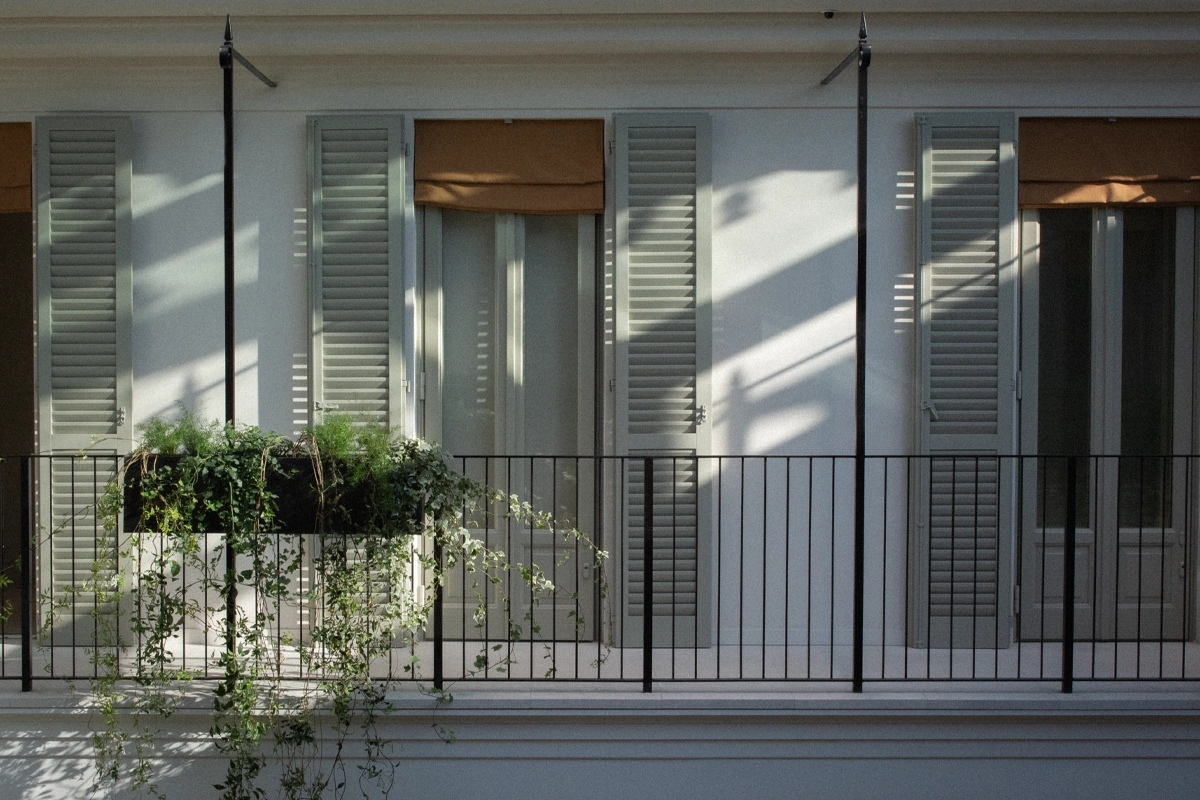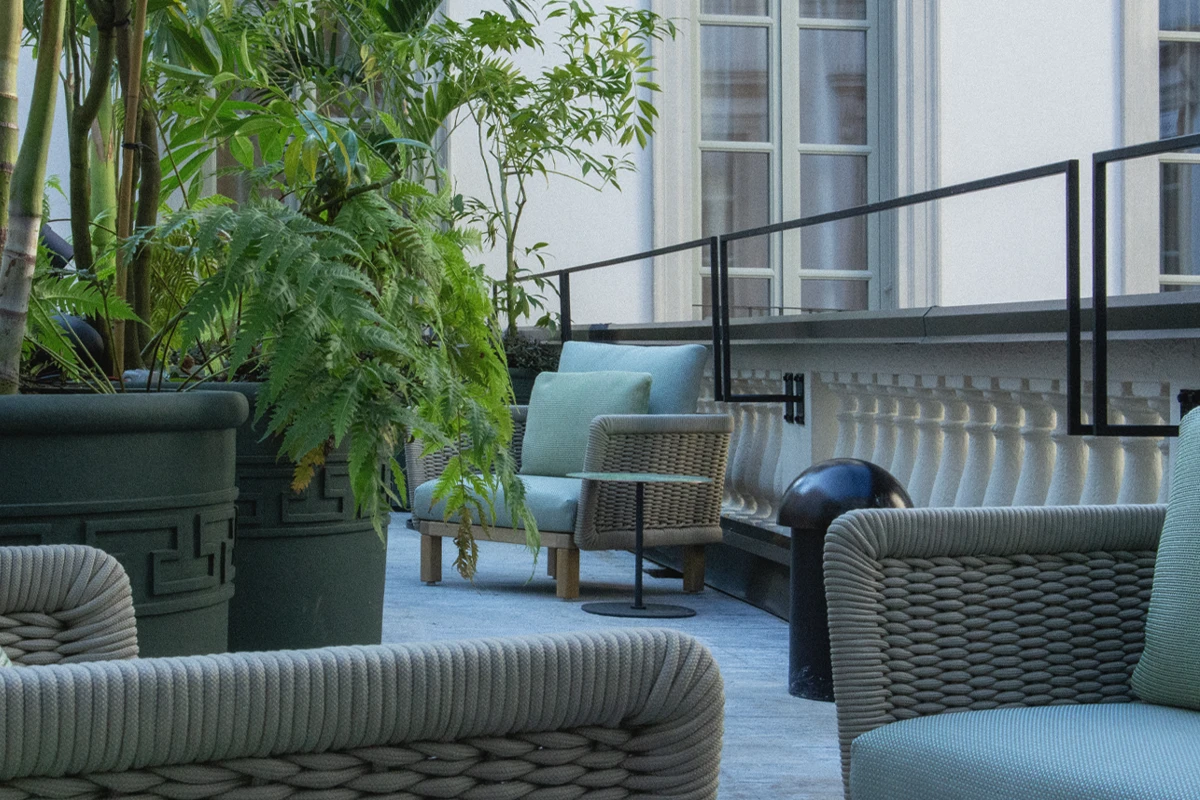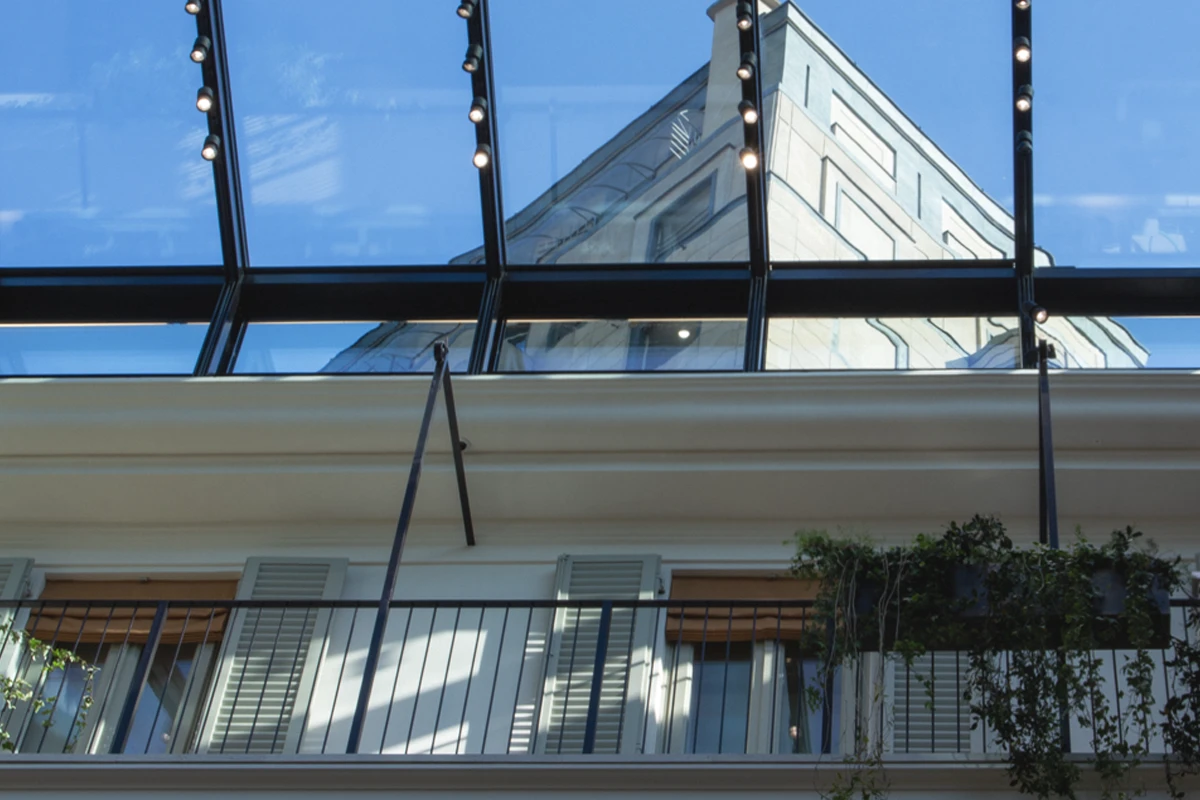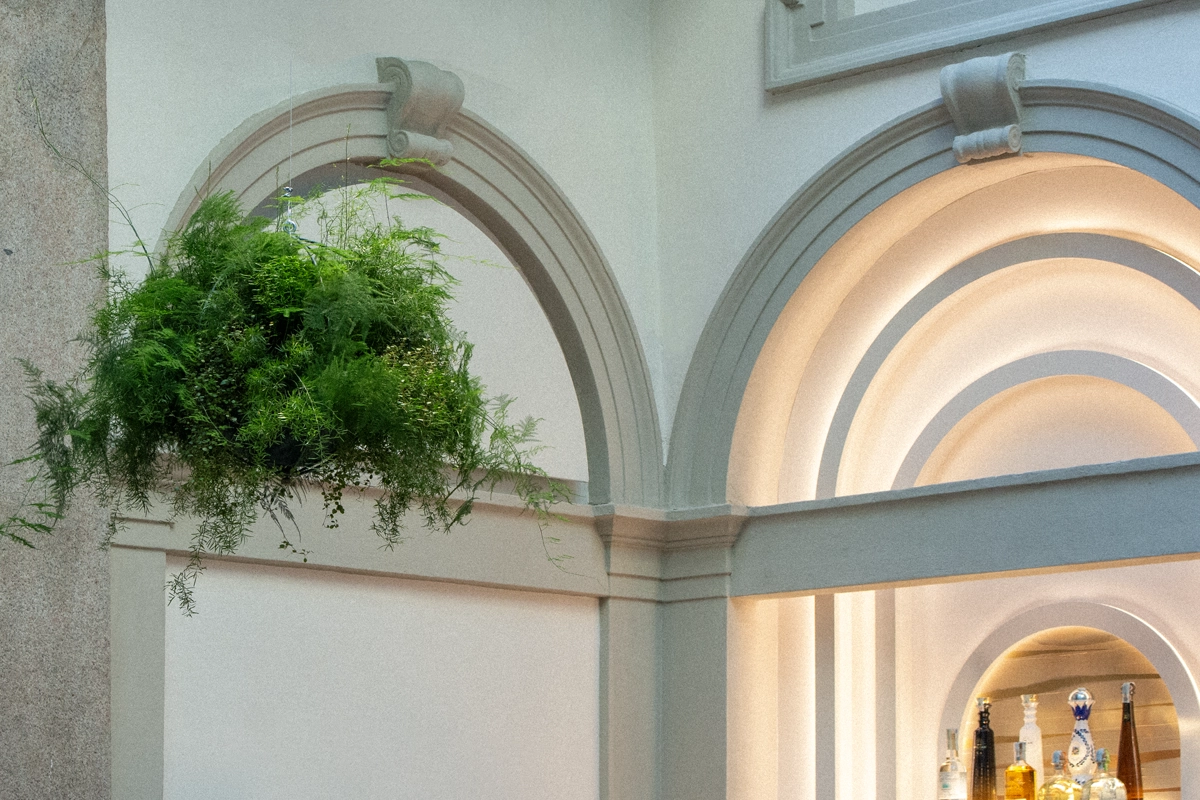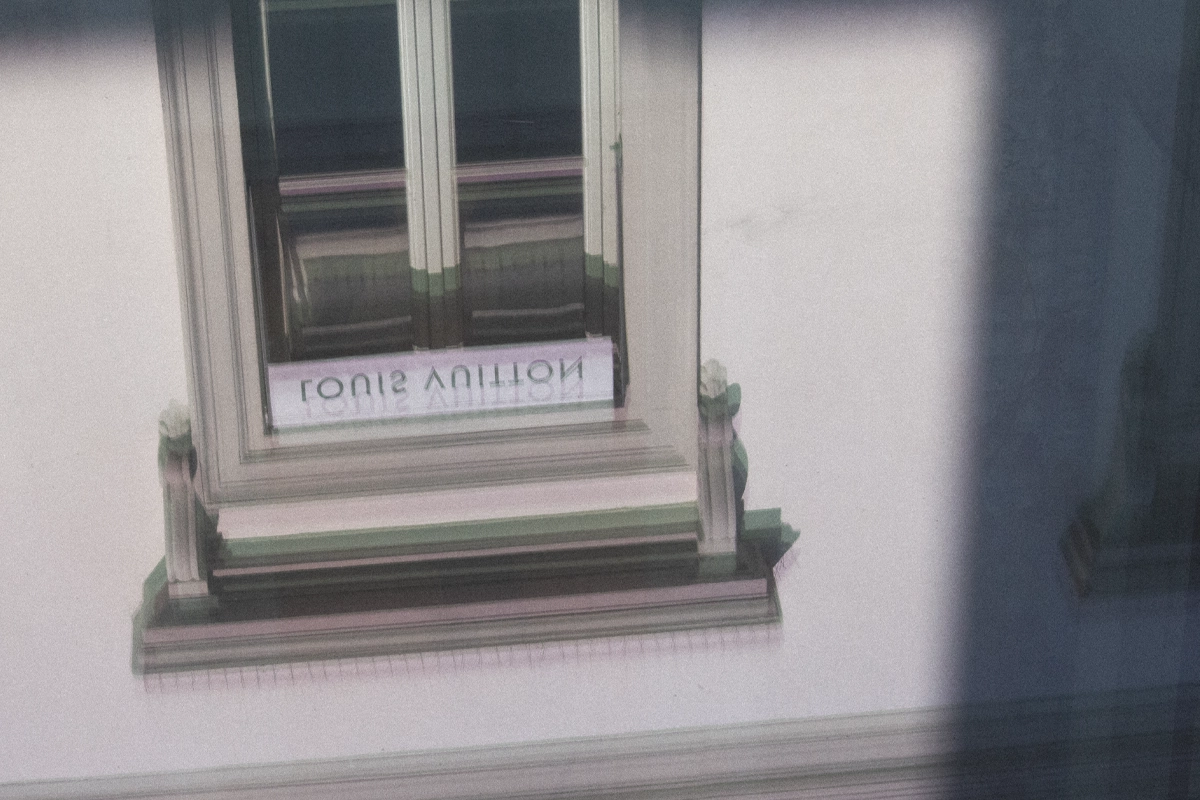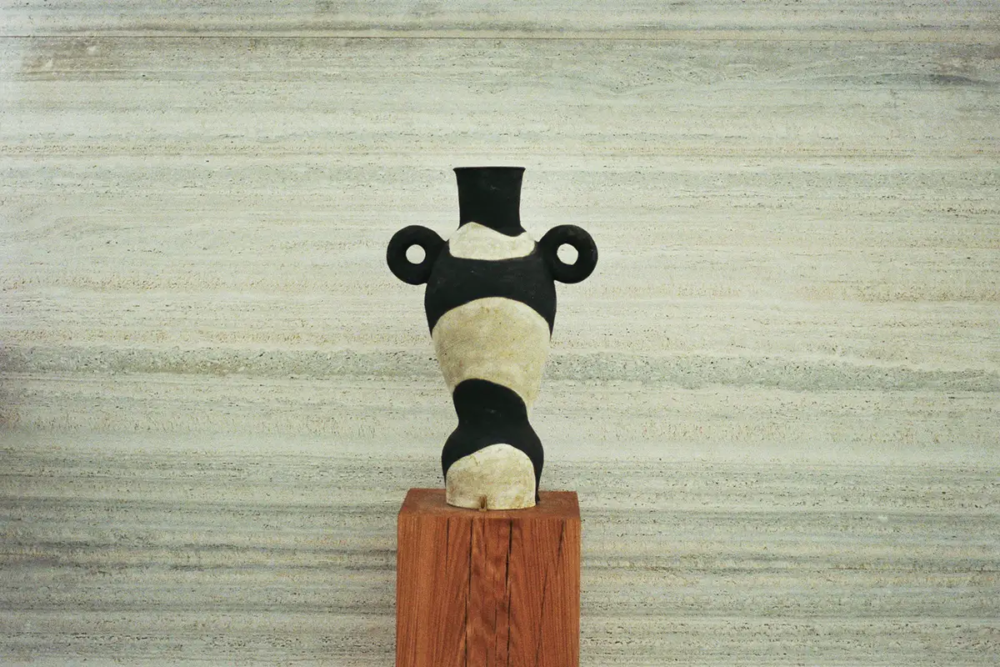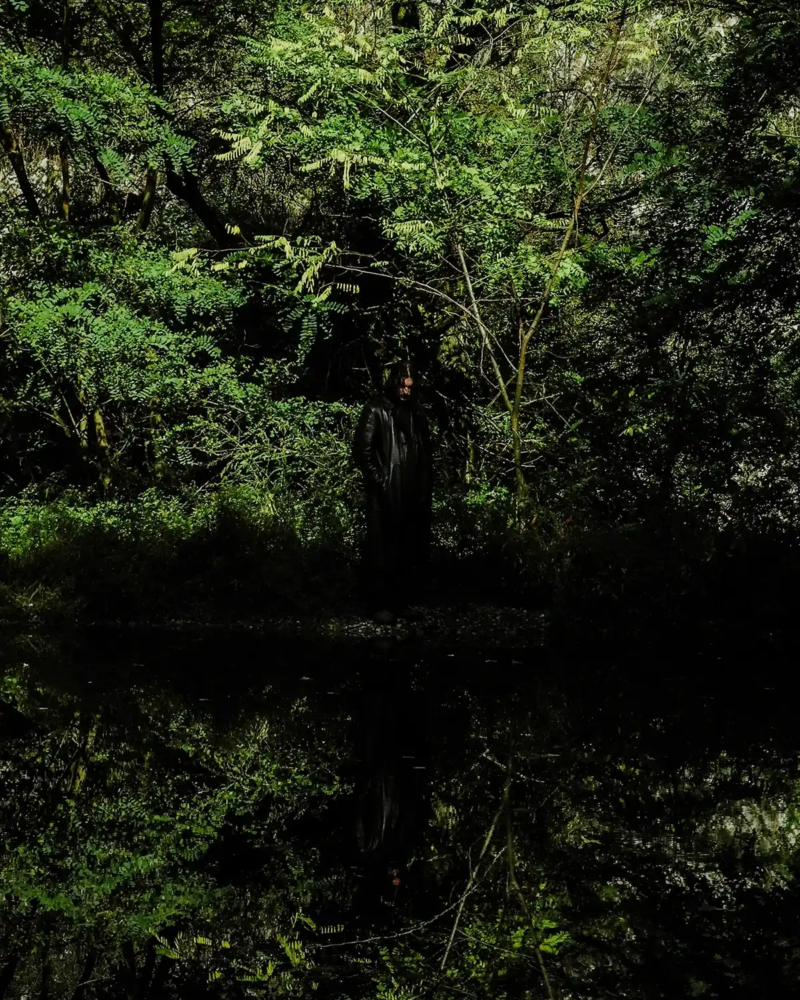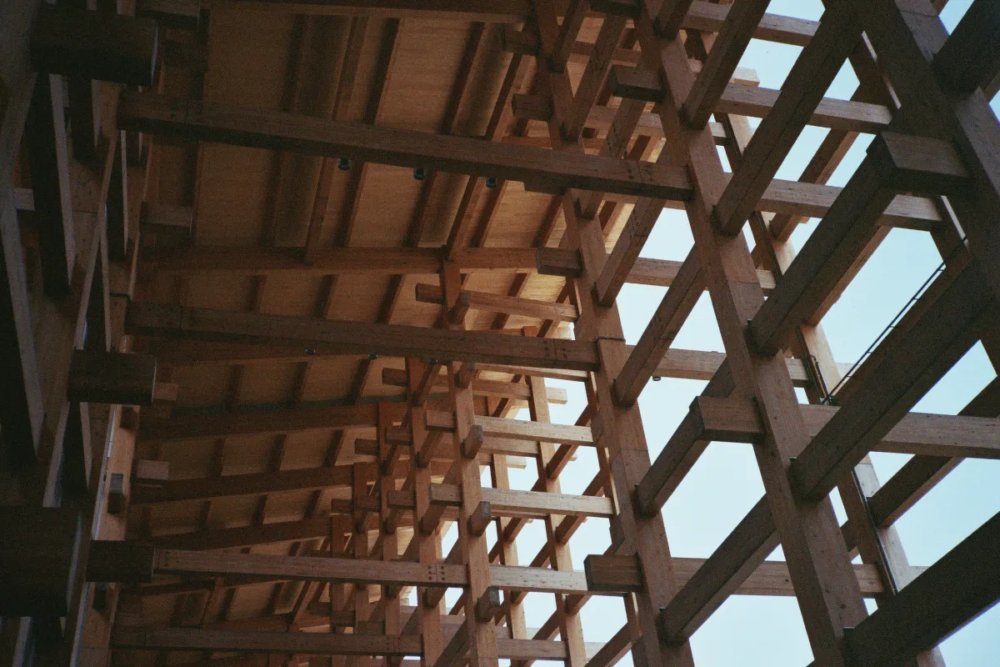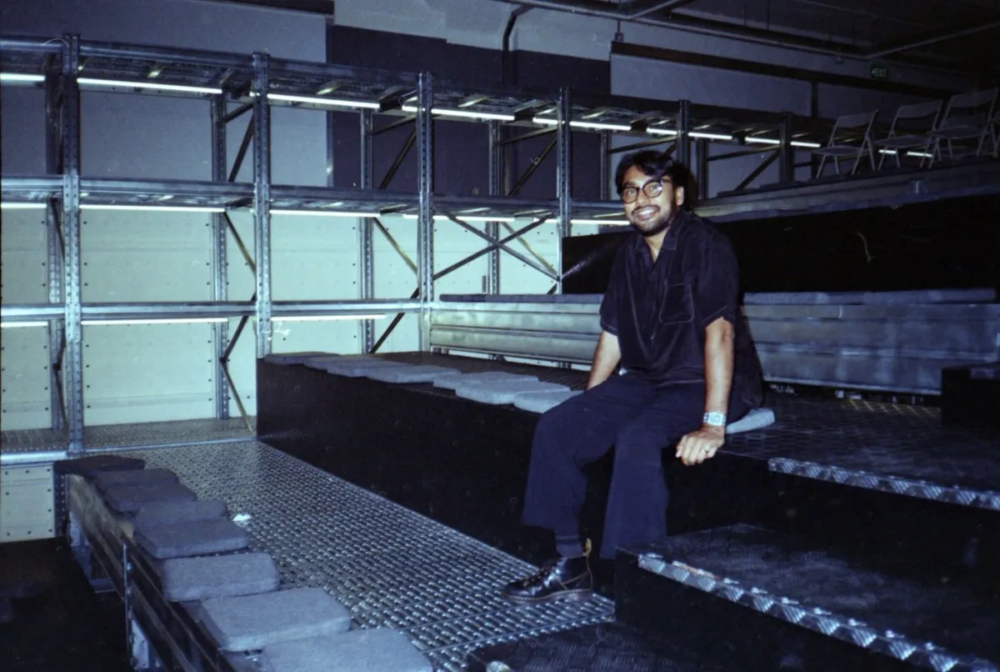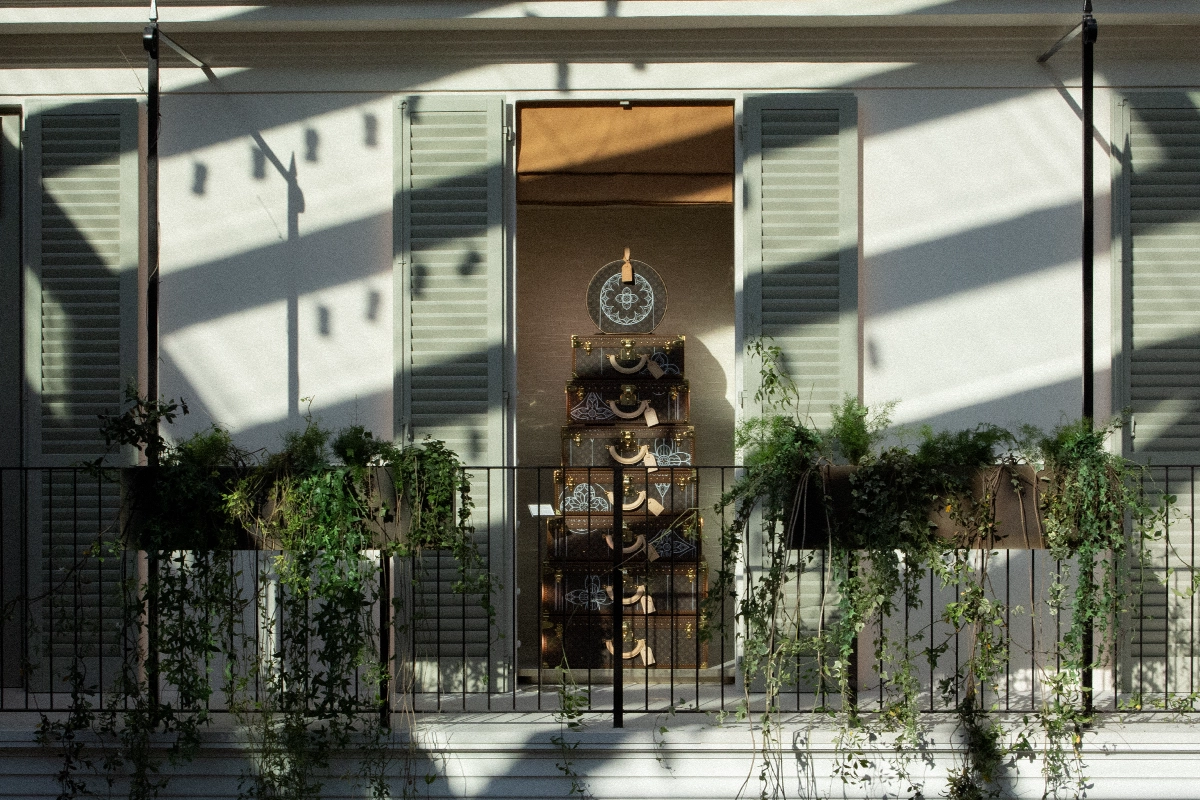
Marco Bay: botany for Louis Vuitton on Via Montenapoleone
With the reopening of Louis Vuitton on Via Montenapoleone, an interview with landscape architect Marco Bay about the project at Palazzo Taverna: the word “native” no longer makes sense—botany is about experimentation
The historic Louis Vuitton flagship at Via Montenapoleone 2 reopens
In Milan, following a three-year renovation, the historic Louis Vuitton flagship at Via Montenapoleone 2 has reopened inside the renewed Palazzo Taverna. This initiative involves the entire building, which has been transformed into a destination uniting fashion, design, and dining. At the same time, Louis Vuitton is renewing its bond with the urban setting by supporting the City of Milan in enhancing its artistic heritage, offering backing for the restoration of a section of the Castello Sforzesco.
Inside Palazzo Taverna, built in 1835 to a design by Ferdinando Albertolli, the late Neoclassical structure has been reimagined to blend historic architecture with contemporary additions. Entering through the main entrance leads to an internal courtyard protected by a glass ceiling, inspired by winter greenhouses. At the center stands a typical “ringhiera” layout, where plants spill down from the balconies, creating a verdant effect that brings life to the space.
The materials and details chosen for the store reference Lombard artisanal techniques: woodworking and stonework come from local workshops, while the central staircase draws inspiration from Milanese references such as Villa Necchi Campiglio and Palazzo Bagatti Valsecchi. The interiors are further enriched by design collections and contemporary art pieces.
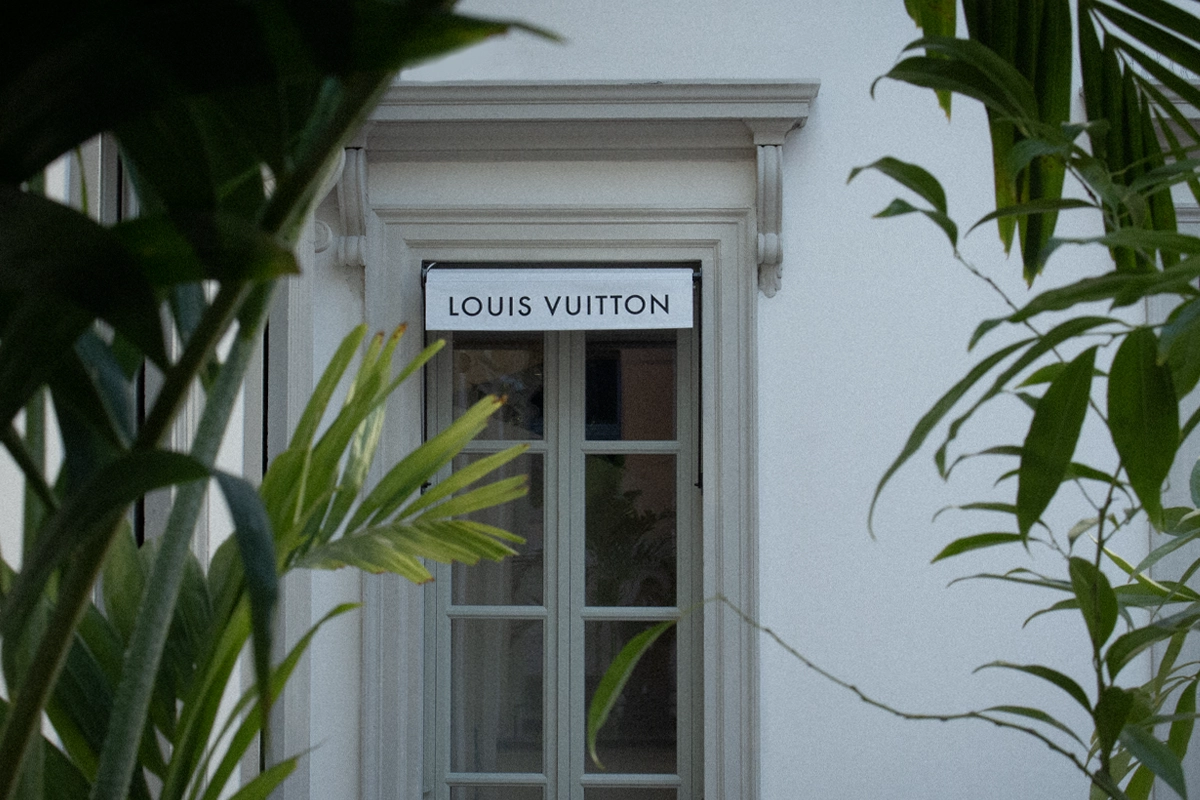
Interview with Marco Bay
Marco Bay: I move between very different landscapes, from the Engadin to Sicily. Nature governs both the architecture and the client’s wishes. In Milan, I mostly work on terraces. I’m a garden architect—I pick the plants, but I also want to invent the pots.
Carlo Mazzoni: You designed green terracotta pots, crafted in Belgium. Their decorative motif echoes the shape of the window railings at Palazzo Taverna. You’ve placed these pots in Louis Vuitton’s courtyard, which is reopening on Via Montenapoleone after three years of construction. In the heart of the palazzo, Peter Marino has recreated a courtyard with balconies—a typical ring-shaped residential structure, yet within an aristocratic late Neoclassical building with Ionic pilasters crowned by a pediment.
Traditionally, the courtyards of Milanese palazzi have long been filled with a variety of plants, not just in recent decades but over the past centuries. It was common in Milan for families to move their plants into the courtyards—whether in sun or shade—when they left for vacation (once to Brianza, now to Versilia). The resulting arrangements were layered and diverse, sometimes remaining in place permanently. Milanese gardens are eclectic, mixing vegetable-garden plants with palms. In Louis Vuitton’s courtyard, Marco Bay has placed tree ferns and Asparagus sprengeri, an asparagus species once popular in 1970s Milanese floral bouquets. Its foliage is light, graphic, almost feathery. Above the portico, he added Alexander palms (also known as royal palms)—new, leafy accents for Via Montenapoleone.
Marco Bay: I’m not searching for native species per se, but rather a mix reflecting Milan’s evolving taste. A gardener travels the world in search of unusual plants; surprising people in a new space often requires a mix of experimental species. Milan does not have a historic landscape—the oaks belong in Lombardy’s forests, along with wolves—but here in place of those oak woods, we have the city. We no longer have oak forests, nor do we (or maybe we do) have wolves.
Carlo Mazzoni: The iron gate and Ionic colonnade mark the Via Montenapoleone entrance to Louis Vuitton, which will also be accessible through the store’s main atrium. It’s a uniquely villa-like courtyard right in downtown Milan. A kind of veranda, a jardin d’hiver, a glass house—inspired by an old Cecil Beaton photograph. The flooring itself is a work of art: stones in white-to-black shades recreate a design by Martin Klein. It was produced by the historic craftsman Fantini, known for other courtyards in central Milan. The wall restorations have brought back the original arches, now enhanced by an added perspective that increases their depth. Every piece of furniture here was custom-made in Lombard ateliers.
Marco Bay: We’re growing climbing plants—once they’re in place, they should look as if they’ve always been here. Five or six different varieties: from Cissus alata to Muehlenbeckia complexa. Peter Marino requested ‘star jasmine,’ but all jasmines have star-shaped flowers. The specific species here is Jasminum azoricum. Meanwhile, the false jasmine (Trachelospermum jasminoides) doesn’t appeal to me—it’s plastic-looking, overused, and even a bit cloying. Inside, as in a greenhouse, perhaps the star jasmines will bloom more. The stable temperatures will help the plants grow. The climbers are a mix; blooms aren’t always guaranteed due to artificial lighting. A first green filter will be just beneath the portico, a barrier along Via Montenapoleone.
On the balconies, the planters are zinc-coated metal over wood. They’re sealed, with an inspection tube inside—by inserting a small probe, you can see the water level and decide if watering is needed. They have no drainage, so water dosage must be precise. Irrigation will be done by hand. Indoors, the leaves will need spraying, so we’ve planned misting. Protective sheets will be used to shield the store interiors whenever the gardeners are working. We’ll need a thorough maintenance plan, to be integrated with the store’s logistics—from stock management to cleaning.
Carlo Mazzoni: There’s a whole world of botany—leaf design, shiny surfaces, a fragrant flower here and there, the elegance of ferns. A garden should astonish with plants more intriguing than the usual giant azaleas in bloom.
Marco Bay: Yes, there are botanical trends, historical research, and curiosity about the future. We no longer choose a cedar—they’re prone to disease. Beeches need the cool soil and climate found at a thousand meters of altitude. Planting those species now is botanically misguided; stylistically it’s off, too. I pick plants directly at the nursery: each one must differ from the next. You can’t choose plants on a computer screen; you have to touch them, sense them.
Carlo Mazzoni: We live in an era where everything—including our cities—should be ‘short supply chain,’ ‘local,’ autochthonous. Milan does have Europe’s largest Agricultural Park within its urban area. Celtis australis (European nettle tree)—nicknamed spaccasassi, or “stone-splitter”—and lime trees are native species here, as are alders. Historically, Milan was an inward-facing city; only recently has it sought out terraces, courtyards, balconies—any corner possible for growing shrubs.
Marco Bay: Autochthonous is a term that should be abolished in botany. Magnolia grandiflora comes from China yet is now considered native to Lombardy. The plane tree is Oriental. Ginkgo biloba comes from the Far East. Everything is cross-pollinated. Hydrangeas hail from China and Japan. Camphor trees—Cinnamomum camphora, an evergreen—were unthinkable in Milan until about twenty years ago. There’s always a risk of frost—like in 1985, when half the olive trees in Italy died, only to regrow from their stumps.
We don’t plant trees in Milanese squares. Partly it’s not in the city’s tradition. Mostly, it’s about the cost and maintenance they require. Italy has a centuries-old gardening tradition that the world admires—Italian gardens have been imitated everywhere. We have a thousand-year culture of gardens, yet today we lag behind in urban reforestation. Here in Italy, my profession still tends to be seen as secondary. Abroad, landscape design is an integral part of primary planning—that’s something I’ve experienced firsthand when working with foreign clients. I go to the UK, France, Belgium, attending fairs and visiting gardens. Everything revolves around the garden there.
Carlo Mazzoni
